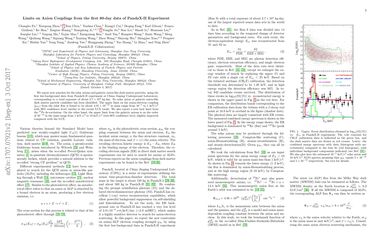Limits on Axion Couplings from the first 80-day data of PandaX-II Experiment
We report new searches for the solar axions and galactic axion-like dark matter particles, using the first low-background data from PandaX-II experiment at China Jinping Underground Laboratory, corresponding to a total exposure of about $2.7\times 10^4$ kg$\cdot$day. No solar axion or galactic axion-like dark matter particle candidate has been identified. The upper limit on the axion-electron coupling ($g_{Ae}$) from the solar flux is found to be about $4.35 \times 10^{-12}$ in mass range from $10^{-5}$ to 1 keV/$c^2$ with 90\% confidence level, similar to the recent LUX result. We also report a new best limit from the $^{57}$Fe de-excitation. On the other hand, the upper limit from the galactic axions is on the order of $10^{-13}$ in the mass range from 1 keV/$c^2$ to 10 keV/$c^2$ with 90\% confidence level, slightly improved compared with the LUX.
PDF Abstract